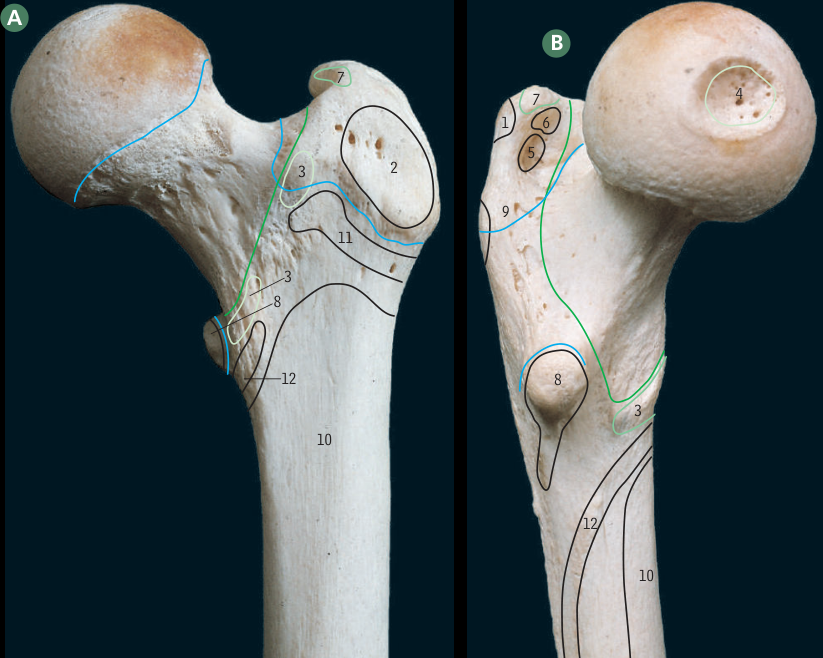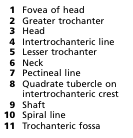Introduction:
Wash your hands.
Introduce your self, including name and role.
Confirm patient details.
Develop good rapport.
Gain consent to take history.
You: Hello good morning, I am Dr.......... one the surgical doctors working here, can I start by confirming your name and age please?
Patient: Hi doctor, I am David Johnson, and I am 50 years old.
You: Nice to meet you, are you happy for me to call you David?
Patient: Yes sure doctor.
You: Today I will be asking you few questions and I will be writing down this piece of paper, are you ok for us to proceed?
Patient: Sure doctor.
Main complaint:
-Start with an open ended question
You: So what brings you in today David?
Patient: Well doctor, i've been having this knee pain for the last 4 months or so, it has been bothering me.
You: I can see, I am sorry to hear about this David.
Try using the patient's name frequently throughout the history taking station, this will help to show the examiner that you are trying to develop a relationship with the patient.
Main complaint, start with site
-Clarify whether it is the right or left knee, and also whether it is diffuse or localised to one part of the knee.
-Diffuse pain can be the result of synovitis, septic arthritis, or autoimmune arthropathy, pain localized to side of the knee may indicate meniscal injury, or collateral ligament injury, e.g. Pain on the medial side of the knee may indicate meniscal tear or medial collateral ligament injury, another possibility is pes anserinus bursitis.
You: Where do you feel this pain david, is it your right or left knee?
Patient: In my right one doctor.
You: Would you say that you are feeling it all over your knee? Or in a particular spot on the knee?
Patient: Its all over my knee.
Onset:
-Acute knee pain may be seen with septic arthritis, trauma, crystal arthropathy (gout and pseudogout, reactive arthritis, and acute hemarthrosis e.g: Hemophilia, post-traumatic.
-Gradual knee pain may be seen with osteoarthritis, chondromalacia patellae, rheumatoid arthritis, chronic meniscal tears, iliotibial band syndrome, among others.
You: Was it sudden or gradual?
Patient: It was gradual, it has been worsening over the past 4 months.
Character:
-Dull aching pain is commonly associated with osteoarthritis, sharp tearing pain is usually associated with mechanical issues such as ACL rupture, and acute meniscal tears.
You: How can you describe this pain for me David? How does it feel like?
Patient: It is mostly dull aching.
Radiation:
-Sometimes knee pain is a manifestation of a pathology in the hip or spine, for example avascular necrosis or osteoarthritis of the hip pain be referred to the knee, lumbar spine pathology around L3/L4 maybe referred to the knee, rarely a strangulated obturator hernia may present with knee pain due to referral along the obturator nerve (Howship-Romberg sign).
-A ruptured baker's cyst may cause posterior radiation.
You: Does this pain go anywhere David, or is just in your knee?
Patient: Its just on my knee doctor.
-Leave them in the end, important associated features to ask about include:
History of trauma:
-If the patient reports a history of trauma, try to clarify the following points:
Time of trauma:
When did this happen, generally speaking, trauma to a joint that has happened long time ago and now presenting with pain points towards traumatic secondary osteoarthritis.
Mode of trauma
The mechanism of trauma will give a clue to the likely diagnosis, a twisting injury to the knee can cause meniscal tear or ACL injury, A RTA where a dashboard injury is involved is commonly associated with posterior cruciate ligament injury.
A trauma to the lateral side of the knee causing a valgus stress can cause rupture of the medial collateral ligament, a trauma to the medial aspect of the knee causing a varus stress can cause lateral collateral ligament injury.
Hip and spine
Ask about pain or difficulty moving the spine or hip, as pain from these regions can be referred to the knee.
Malignancy
-Ask about weight loss and loss of appetite, if there is loss of weight, as about how many kg over how much time.
Systemic arthropathy
-Ask about problems with other joints, as the knee may be involved in a systemic pathology such as ankylosing spondylitis, systemic lupus erythematosus and rheumatoid arthritis.
Extraintestinal manifestations of inflammatory bowel disease
-Ask about abdominal pain and bowel habit, erythema nodosum, pyoderma gangrenosum, oral ulcers and uveitis conjunctivitis.
Ask about mechanical symptoms
-Ask about locking, which is a feature of a loose body in the knee, such as meniscal injuries or osteoarthritis diseases.
-Giving way, a feature of cruciate ligament injury.
You: Have you injured your knee David?
Patient: Yes doctor, 30 years ago, I sustained a knee injury while playing a football match.
You: Can you remember how it happened?
Patient: Not really, it was long time ago.
You: Do you recall your knee immediately swelling afterwards? Where you able to continue playing or you stopped?
Patient: I do not remember that, but I do remember that I couldn't continue playing, I was taken to hospital and a surgery was done.
You: Do you recall what type of surgery it was done?
Patient: No not really doctor.
You: Did you suffer a temperature? Felt under the weather or developed chills and shiveries?
Patient: No.
You: Did you notice any swelling or hotness around your knee?
Patient: No doctor.
You: Do you feel that your knee is stiff?
Patient: Yes doctor quite stiff.
You: How long does it take to be loosen up?
Patient: Around 10 minutes.
You: Have you noticed any pain or difficulty with moving your hip or back?
Patient: No.
You: Have you lost weight unintentionally or lost your appetite?
Patient: No.
You: What about your other joints David? Did you notice any swelling, pain or problem with moving them?
Patient: No its just the knee.
You: Do you have tummy pain or any changes to your bowel habits?
Patient: Not at all.
You: Have you noticed painful red bumps especially on your legs (Erythema nodosum)?
Patient: No.
You: Have you noticed any sores or ulcers, especially on your legs (Pyoderma gangrenosum)?
Patient: No.
You: What about mouth sores?
Patient: No.
You: Did you notice any locking in your knee?
Patient: No.
You: Did you notice that your knee is unstable or giving way?
Patient: No.
Timing:
-Ascertain about which time of the day the pain is at its worst, also ask about the course, whether it is increasing, decreasing, remaining the same or fluctuating.
You: Is there any particular time of the day where this pain is worse?
Patient: Usually towards the end of the day doctor.
You: I would you say that the pain is getting better, worse, remaining the same, or going up and down?
Patient: It is definitely getting worse doctor.
You: I am really sorry to hear about it David, you must be having a difficult time.
Patient: Yes doctor.
Exacerbating and relieving factors:
-Mechanical pain such as osteoarthritis is usually worse with activity, such as walking, jumping or weight bearing, and it is better with rest.
-Inflammatory pain, such as rheumatoid arthritis is worse with rest and inactivity, and improves with movement.
You: Is there anything that makes the pain worse or better?
Patient: Its worse when I move or stand, it gets better when I rest doctor.
Severity:
You: On a scale of 0 to 10, with 0 being no pain, and 10 being the worst pain you've ever had, how much would you rate your pain David?
Patient: It was about a 3, but now its more like a 5.
Past medical and drug history
-Conditions relevant to knee pain include:
Pre-existing knee injury, such as in the example above, the most likely diagnosis is traumatic osteoarthritis.
Inflammatory arthropathy, such as rheumatoid arthritis, systemic lupus erythematosus and ankylosing spondylitis.
Crystal arthropathy, including gout and pseudogout.
Prosthetic arthritis, predispose to septic arthritis of the affected joint.
Pre-existing lumbar spine diseases or hip joint pathology, which may be referred to the knee.
Chronic kidney disease, which predisposes to gout and pseudogout.
You: Have you ever been diagnosed with a medical condition that you are seeing your GP for or taking any? Such as diabetes, previous joint or kidney problems?
Patient: I have been dealing with diabetes?
You: For how long have you been diagnosed with diabetes?
Patient: For about 10 years doctor.
You: Would you say its well controlled with your GP?
Patient: Yes doctor, I did one last year and it was fine.
You: Great, and what do you take for your diabetes?
Patient: I take metformin 1000 mg once a day.
You: Perfect, and do you use any other medications, including over the counter?
Patient: I used Ibuprofen for my knee pain, it did not help a lot.
You: I am sorry to hear this, I can see the pain is troubling you a lot, and are you allergic to any medications or anything else David?
Patient: Yeah I am allergic to Penicillin.
You: Sorry to hear that, and what happens when you take penicillin, can you clarify what you mean by allergy?
Patient: My stomach starts hurting me, once time I got a diarrhea because of it.
You: What about rash, difficulty in breathing or wheezing when you take it?
Patient: No, that does not happen.
Tips and tricks
When you take the past medical history, or if you find out that you have time, you can ask about the duration of the disease and whether it is well controlled or not, if the patient gives you a diagnosis, you can use this to smoothly move into drug history just like in the example above. When the patient tells you he/she is allergic to anything always clarify what do they mean by allergy, many patients will refer to any drug side effect as "allergy."
Past surgical history:
-As usual.
Social history:
Use the mnemonic SAROL (Smoking, Alcohol, Recreational drugs, Occupation, Living conditions and quality of life impairment) as usual, explore quality of life impairment as well.
Family history:
Ask about family history of joint disease e.g. Rheumatoid arthritis, ask about family history of cancer.
You: Ok David, Have any of your immediate family members been diagnosed with a medical condition such, joint disease or cancer, or anything else that I should know about?
Patient: No doctor.
Summarize and close the consultation.
"Thank you, David. You've been having right knee pain for the last four months, which is dull, aching, worse with activity, and better with rest. Your knee is also stiff for about 10 minutes in the morning. You had a knee injury and surgery 30 years ago, but don't recall the details. You have well-controlled diabetes. There are no other joint problems. Would you like to correct or add anything else?"




